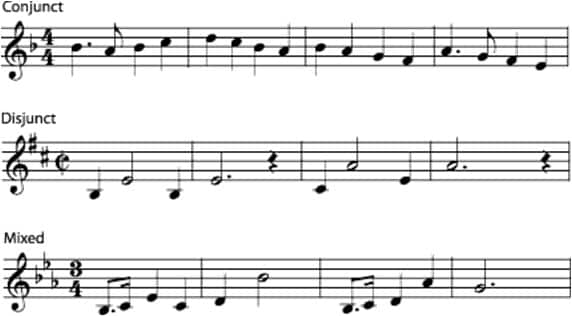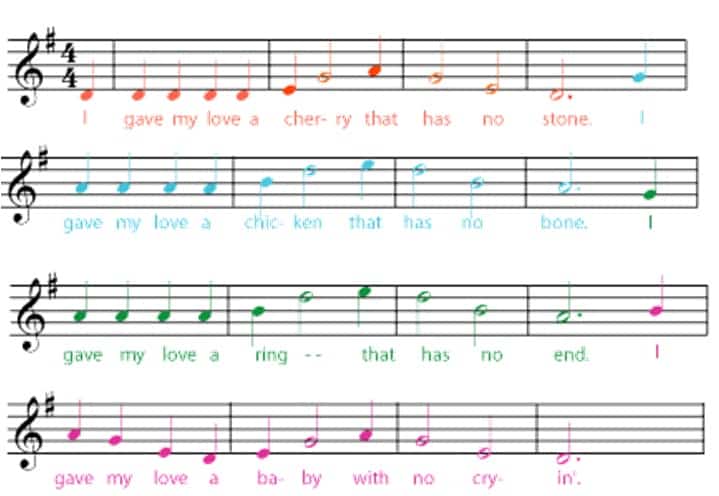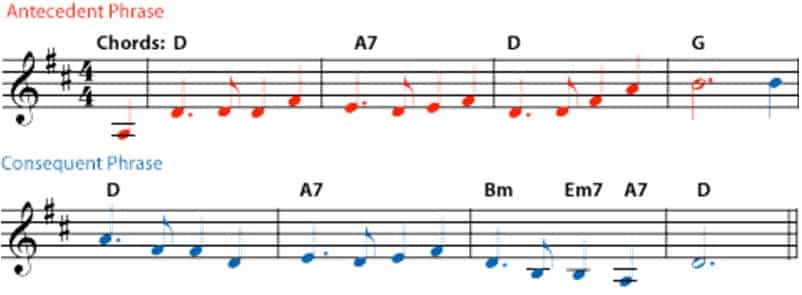The melody is the most basic element of music. It is the part of the song that sounds the most important, and catches your ear. Often, the melody is sung by a vocalist, or played by a solo instrument.
The melodic line is a string of notes played together that make up the melody.
Extra notes, such as trills or grace notes are not part of the melodic line but are added as ornaments or embellishments.
Shape or Contour of Melody
If we just played the same notes over and over music would be very boring. As the music progresses, the melody rises and falls, slowly or quickly. This creates a visible shape on the page.

We can see that the shape of this melody rises with the notes on the staff, and then slightly falls, creating an arch shape.
Words that we can use to describe the direction or shape of a melody are: rising or ascending, falling or descending, or an arch-shaped phrase.
Melodic Motion
Another set of terms we can use to describe the melody are those that refer to the distance between each note.
When the notes are close together:
A melody that rises or falls gradually with only small changes in pitch between notes is called conjunct motion. When the notes are only a semitone or a tone away from one another, it is moving in step-wise or scalar motion.
When the notes are farther apart:
When the notes in the melody ascend and descend quickly, with large spaces between the notes, we call this disjunct motion. We refer to these distances as “jumps” or “leaps”
Many melodies have a mixture of conjunct and disjunct motion.

Melodic Phrases
Melodies are often described as being made up of phrases. This is actually quite similar to a grammatical phrase.
A phrase in a sentence (for example, “into the deep, dark forest” or “under that heavy book”) is a group of words that make sense together and express a definite idea, but the phrase is not a complete sentence by itself.
A melodic phrase is a group of notes that make sense together and express a definite melodic “idea”, but it takes more than one phrase to make a complete melody.

Composers will maintain interest in their piece by varying how strongly the end of the phrase sounds like “the end” of the piece. By varying the rhythm and the harmony in a phrase, the composer can create a stronger or weaker ‘end’ sound.
Often, phrases come in definite pairs, where the first phrase is like a question, and the second phrase is the answer to that question. This sounds like a call-response. The first phrase is called the antecedent, and the second, answering phrase is called the consequent.

